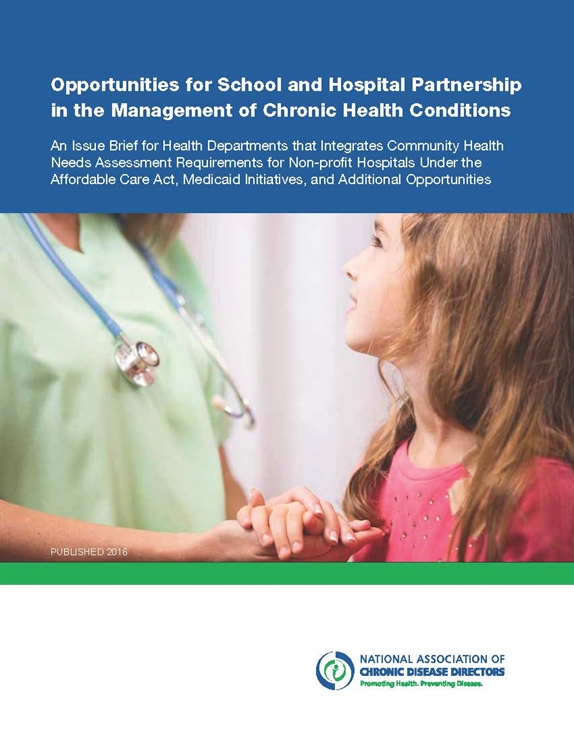 Millions of children are living with a diagnosis of a chronic health condition, and many of these children require management during the school day. According to the National Survey of Children’s Health, 2011-2012, an estimated 15.9 percent of children ages 6 to 11 and 17.5 percent of children ages 12 to 17 have at least one chronic health condition.
Millions of children are living with a diagnosis of a chronic health condition, and many of these children require management during the school day. According to the National Survey of Children’s Health, 2011-2012, an estimated 15.9 percent of children ages 6 to 11 and 17.5 percent of children ages 12 to 17 have at least one chronic health condition.
NACDD recently announced a new publication related to this important topic of management of chronic health conditions in schools, titled “Opportunities for School and Hospital Partnership in the Management of Chronic Health Conditions: An Issue Brief for Health Departments that Integrates Community Health Needs Assessment Requirements for Non-profit Hospitals Under the Affordable Care Act, Medicaid Initiatives, and Additional Opportunities.” The issue brief was authored by Amanda Martinez, Consultant, per a NACDD project funded by the CDC School Health Branch and had support from Rachelle Chiang, Senior Consultant for School Health.
From August 2015 to February 2016, Martinez conducted research including a review of resources and interviews with 30 stakeholders to inform the publication’s development. Select stakeholders reviewed some or the entire draft document at later dates. A few states served in an advisory capacity.
Martinez drew from efforts aimed at enhancing the integration of health care and public health in partnership with other sectors, along with her past experience in hospital and school settings, to help guide the publication content. In an interview, Martinez said that more needed to be done to raise awareness of chronic health conditions students may have and how these conditions can affect both health and education outcomes – schools are critical to improved public health because they are a part of the community and play a strong role in providing school health and nursing services to meet the management and care needs of these students.
According to Martinez, many hospitals want to prioritize children’s health needs. But due to other rising priorities, hospitals and schools may not have had opportunities to work together. The CHNA is a partnership opportunity that can give a strategic framework and strength to implement new or existing activities.
The publication highlights strengthened relationships between schools and hospitals as a strategy to more effectively achieve integrated service delivery for students with chronic health conditions and example partnerships from across the country. It features specific strategies and resources for state health departments and their education department partners to facilitate success of school and hospital partnership at the local level.
